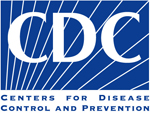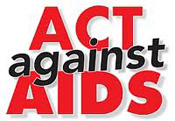Centers for Disease Control and Prevention

The Centers for Disease Control and Prevention (CDC), part of the U.S. Department of Health and Human Services, is the nation’s leading health protection agency – working 24/7 to save lives, protect people from health threats, and save money through prevention. CDC is the lead agency for the nation’s efforts to prevent HIV, with responsibilities for public health surveillance, prevention research, and programs to prevent and control HIV.
Within CDC, the National Center for HIV/AIDS, Viral Hepatitis, STD and TB Prevention (NCHHSTP) leads HIV/AIDS activities.
National Center for HIV/AIDS, Viral Hepatitis, STD and TB Prevention
The National Center for HIV/AIDS, Viral Hepatitis, STD, and TB Prevention (NCHHSTP) is part of the Centers for Disease Control and Prevention (CDC), an agency of the U.S. Department of Health and Human Services (HHS).
NCHHSTP brings together CDC’s HIV prevention activities under a single organizational home. NCHHSTP applies well-integrated, multidisciplinary programs of research, surveillance, risk factor and disease intervention, and evaluation. NCHHSTP addresses domestic HIV/AIDS prevention through an array of public health activities including monitoring the disease’s impact, facilitating and supporting partnerships, implementing prevention programs, conducting intervention research and program evaluation, delivering technical assistance to build the capacity of organizations to offer prevention services, and developing policy and communications to support HIV prevention.
Additionally, NCHHSTP leads work in prevention and control of viral hepatitis, sexually transmitted diseases (STDs), and tuberculosis, as well as in adolescent and school health as it relates to HIV and STDs. As such, NCHHSTP has been a key implementing partner in the National HIV/AIDS Strategy and the HHS Action Plan for the Prevention, Care & Treatment of Viral Hepatitis.
The diseases addressed by NCHHSTP share a number of commonalities. They have similar or overlapping risks factors as well as important interactions. Those who are infected with certain STDs, such as syphilis or gonorrhea, are at greater risk for HIV infection. Similarly, hepatitis B and HIV share modes of transmission—sexual contact and injection drug use. Also, approximately 25% of those infected with HIV are co-infected with hepatitis C. Additionally, those who are infected with HIV are far more susceptible to TB disease because their immune systems are weakened.
These diseases also share similar social determinants, including poor access to health care, stigma, discrimination, homophobia, and poverty. In the area of prevention and control, effective, science-based interventions exist to reduce the burden of TB, viral hepatitis, most STDs, and HIV.
Content provided by CDC.
Read related AIDS.gov blog posts
Featured Resources

Act Against AIDS - A national campaign launched by the CDC and the White House to combat complacency about HIV and AIDS in the United States. It focuses on raising awareness among all Americans and reducing the risk of infection among the hardest-hit populations—gay and bisexual men, African Americans, Latinos, and other communities at increased risk.
HIV Surveillance Report - An annual overview on the current epidemiology of HIV disease in the United States and dependent areas.
CDC NPIN (National Prevention Information Network) - The U.S. reference and referral service for information on HIV/AIDS, viral hepatitis, sexually transmitted diseases (STDs), and tuberculosis (TB). CDC NPIN collects and disseminates data and materials to support the work of prevention organizations and workers in international, national, state, and local settings.
Last revised: 04/01/2012